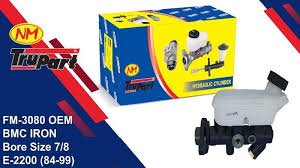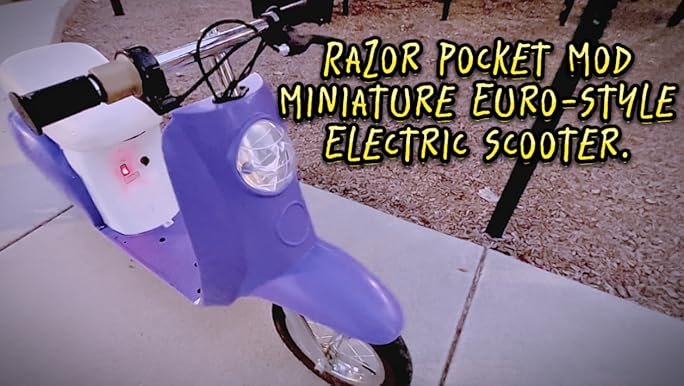
master brake cylinder
When it comes to automotive safety, few components are as critical as the braking system. At the core of this system lies the master brake cylinder, a hydraulic device that ensures effective braking performance by transmitting the driver’s input into mechanical force. Without it, the braking system would fail to distribute the necessary hydraulic pressure to the wheels, making safe driving nearly impossible. This article explores the master brake cylinder in depth, covering its working principle, types, components, maintenance, common problems, and its role in modern vehicles.
What Is a Master Brake Cylinder?
The master brake cylinder is a key component of a vehicle’s hydraulic braking system. Its main function is to convert the force applied by the driver’s foot on the brake pedal into hydraulic pressure, which is then distributed to the wheel cylinders or brake calipers. This pressure forces the brake pads or shoes against the rotors or drums, creating the friction needed to slow or stop the vehicle. In simpler terms, the master cylinder acts as the central hub that ensures the driver’s command translates into precise braking action.
Components of a Master Brake Cylinder
A master cylinder consists of several important parts that work together:
- Reservoir: Holds the brake fluid and supplies it to the hydraulic system.
- Piston: Moves forward when the brake pedal is pressed, generating hydraulic pressure.
- Cylinder bore: The chamber in which the piston moves.
- Return spring: Pushes the piston back to its original position once pressure is released.
- Seals and gaskets: Prevent leakage of brake fluid and maintain pressure.
- Ports (compensating and intake): Allow the fluid to flow between the reservoir and the cylinder bore.
Each component is crucial for the proper functioning of the master brake cylinder. Even a minor fault in these parts can affect braking efficiency.
How Does the Master Brake Cylinder Work?
The operation of the master brake cylinder is based on Pascal’s Law of hydraulics, which states that pressure applied to a confined fluid is transmitted equally in all directions. Here’s a step-by-step process:
- The driver presses the brake pedal.
- The pushrod connected to the pedal pushes the piston inside the cylinder.
- As the piston moves forward, it compresses the brake fluid inside the bore.
- The hydraulic pressure generated is transferred through the brake lines.
- This pressure forces the brake calipers or wheel cylinders to press the brake pads/shoes against the disc or drum.
- When the pedal is released, the return spring pushes the piston back, and brake fluid flows back into the reservoir through the compensating port.
This cycle ensures smooth and controlled braking every time the pedal is pressed.
Types of Master Brake Cylinders
Depending on design and vehicle requirements, master cylinders are classified into several types:
1. Single-Circuit Master Cylinder
This is the simplest type, usually found in older vehicles. It has one piston and one hydraulic circuit. When the brake pedal is pressed, the piston generates pressure in a single line that distributes fluid to all wheels. While simple, it has a major disadvantage: if a leak occurs, the entire braking system may fail.
2. Tandem or Dual-Circuit Master Cylinder
Modern vehicles use dual-circuit master cylinders for safety. It has two pistons and two separate hydraulic circuits. Even if one circuit fails, the other remains functional, allowing partial braking and preventing total brake failure.
3. Step-Bore Master Cylinder
This type has pistons of different diameters to optimize pressure distribution and pedal feel. It provides better control and efficiency, especially in larger vehicles like trucks and SUVs.
4. Quick Take-Up Master Cylinder
These are designed for vehicles with disc brakes, where rapid fluid transfer is necessary. They provide a quicker response when the pedal is pressed lightly.
Importance of the Master Brake Cylinder in Vehicle Safety
The master brake cylinder is often referred to as the heart of the braking system. Without it, brake fluid cannot be pressurized, meaning the brake pads or shoes won’t engage. Some key roles include:
- Consistent pressure distribution to all wheels.
- Preventing total brake failure through dual-circuit design.
- Providing driver control over braking intensity.
- Maintaining safety standards in modern vehicles.
It is not just a mechanical part but a critical safety component that must always be in optimal condition.
Common Problems with Master Brake Cylinders
Over time, a master brake cylinder may develop issues due to wear and tear or poor maintenance. Some common problems include:
- Internal leaks: Worn seals can cause brake fluid to bypass the piston, reducing pressure.
- External leaks: Damaged gaskets or cracked cylinders may leak fluid, leading to reduced braking efficiency.
- Spongy brake pedal: Air trapped in the hydraulic system or a failing master cylinder can cause a soft pedal feel.
- Brake warning light: Modern vehicles have sensors that detect fluid level drops or pressure inconsistencies.
- Pedal sinking to the floor: Indicates severe internal leakage or total cylinder failure.
Symptoms of a Failing Master Brake Cylinder
Recognizing the symptoms early can prevent accidents and costly repairs. Some warning signs include:
- Brake pedal feels soft or spongy.
- Longer stopping distance.
- Brake fluid leakage near the cylinder.
- Illuminated brake warning light.
- Car pulling to one side while braking.
If any of these symptoms appear, immediate inspection and replacement are necessary.
Maintenance and Care for Master Brake Cylinders
Proper maintenance ensures longevity and reliable performance. Here are some key practices:
- Check brake fluid levels regularly.
- Replace brake fluid every 2–3 years to prevent contamination.
- Inspect seals and gaskets for leaks during routine servicing.
- Bleed the brakes whenever air enters the system.
- Use manufacturer-recommended brake fluid for compatibility.
For more detailed guidance on brake maintenance, you can visit NHTSA’s brake safety resources.
Replacement of Master Brake Cylinder
If the master cylinder fails, replacement is often the best option. The steps usually include:
- Removing the old master cylinder by disconnecting brake lines and mounting bolts.
- Installing the new master cylinder and bench-bleeding it before connecting.
- Reconnecting brake lines carefully to avoid leaks.
- Bleeding the entire brake system to remove trapped air.
It is always recommended to have a professional mechanic perform this replacement, as improper installation can compromise safety.
Master Brake Cylinder in Modern Vehicles
With advancements in automotive technology, the master brake cylinder has also evolved. Today, vehicles are equipped with ABS (Anti-lock Braking Systems), Electronic Brakeforce Distribution (EBD), and even brake-by-wire systems, where electronic signals assist or replace hydraulic functions. Despite these innovations, the master brake cylinder remains an integral part of the system, often working in combination with advanced electronic controls to ensure maximum safety.
Cost of Replacement
The cost of replacing a master brake cylinder depends on the vehicle type, labor charges, and quality of parts. On average:
- Economy cars: $150–$300
- Mid-size vehicles: $250–$450
- Luxury cars/SUVs: $400–$800
While it may seem expensive, the cost is justified considering the safety risks of driving with a faulty brake cylinder. You can also compare prices on trusted automotive platforms like AutoZone.
Conclusion
The master brake cylinder may be a relatively small component, but its role in vehicle safety is enormous. Acting as the heart of the braking system, it converts pedal force into hydraulic pressure, ensuring that braking is smooth, consistent, and reliable. Understanding its function, recognizing the symptoms of failure, and maintaining it properly are essential for safe driving. Whether you drive a small hatchback or a heavy-duty truck, the health of your master brake cylinder directly impacts your safety and that of others on the road.






